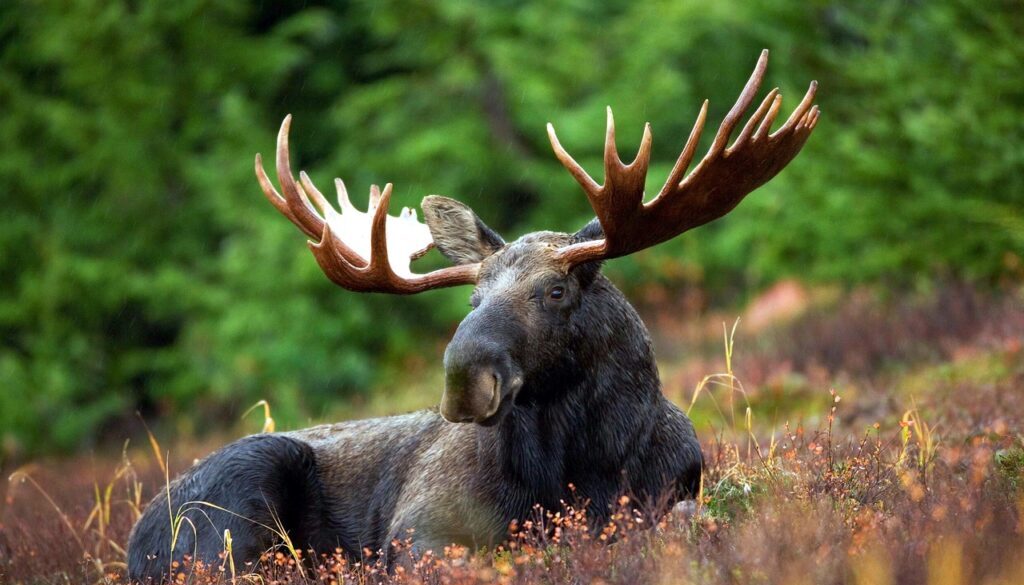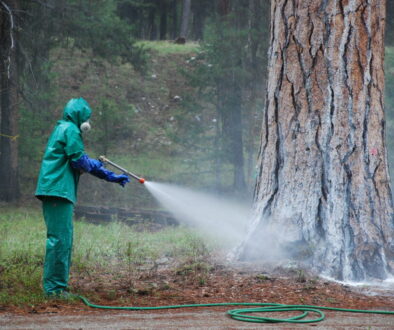PFAS posing threat to wildlife, scientists say
Wildlife exposure to per- and poly-fluoroalkyl substances (PFAS) poses added threats to species already struggling to adapt to habitat loss and harmful climate change, a new paper warns.
In a discussion paper published Tuesday in Science of the Total Environment, scientists wrote that there is enough evidence of the toxicity of persistent chemicals such as PFAS in humans to cause substantial concern about the same chemicals’ impacts on wildlife. Considering toxic chemicals’ health harms to wildlife is especially important, they write, as multiple pressures cause steep drops in biodiversity worldwide.
“There’s an incredible body of scientific evidence linking PFAS to health harms in humans, and this should really serve as an indicator of the potential health harms that may be occurring in wildlife globally,” said David Andrews, a co-author on the paper and a senior scientist at the Environmental Working Group (EWG), an environmental advocacy group.
PFAS are commonly used for their stain- and water-resistant properties and have been used for years as a common ingredient in firefighting foam and many household products. Almost all US residents have PFAS in their blood, and the chemicals contaminate water systems serving millions of people nationwide. PFAS are abundant in the natural environment, as well: According to one analysis by the Waterkeeper Alliance, over 80% of natural waterways are contaminated with the chemicals.
The new paper comes as many state and local governments fight for PFAS eradication: North Carolina’s budget, finalized this month, included $61 million to address the issue of PFAS pollution, while the state government of Pennsylvania announced Monday they would increase funding for PFAS monitoring in waterways. This summer, chemical manufacturer 3M agreed to pay over $10 billion to US public drinking water systems over harmful PFAS pollution.
Toxic across taxa
There are thousands of types of PFAS, and scientists have found evidence that many can impair the immune system and spur developmental and reproductive problems, as well as cause thyroid and hormone disorders, liver problems, cancers, and nervous system effects in humans.
“What we know [about health harms] in humans indicates that this is a threat to wildlife species globally,” said Andrews.
In the handful of studies that have investigated the effects of PFAS on wildlife, the results are largely similar. For example, recent studies have shown that when exposed to PFAS, crayfish and invertebrates decreased their foraging behavior, frogs had disrupted liver function, birds showed reduced hatching success, alligators couldn’t heal from infections as quickly, and turtles developed gut inflammation and worsened immune systems.
The existing data on the health harms of PFAS in animals is likely a dramatic underestimate of all the possible ways PFAS threatens wildlife, the authors wrote. Scientists will likely never have the same breadth of data on the health harms of PFAS in all wildlife species as they do for humans, but there’s enough existing data on both humans and wild animals to infer that the chemicals are a critical threat to biodiversity worldwide, the authors said.
“It’s really difficult to study wild animals in their environment, especially if they are endangered species,” said Tasha Stoiber, a co-author on the new paper and a senior scientist at EWG. “We’re kind of flipping the script, explaining how we might use humans and the data that we have on humans to try to understand what’s happening in animals and how we can use that to try to protect them.”
A warning for biodiversity
Biodiversity — the variety of all living things on Earth — is critical to ecosystem health and the success of human society, the authors point out in the new paper. That means that health risks, such as those posed by PFAS, are shared among species, and a threat to human health is a threat to wild animal health and vice versa.
A map of PFAS detections in wildlife species compiled by EWG scientists shows PFAS are present in the blood or tissue of over 600 animal species, many of which are already endangered or threatened — from endangered sea otters along the Alaskan coast to threatened tuna species in the Indian Ocean.
“We have a chemical that increases rates of cancer impacts, hatching success, reproduction; impacts the immune system, the ability to recover from diseases. These are all health impacts that you do not want in a population that is already under threat,” he said.
In the paper, the authors called for policymakers to consider the abundant data on human health effects of PFAS to make decisions to better protect wildlife. Chemical exposure and its impacts on wildlife “can’t be ignored” as scientists and policymakers work to address the biodiversity crisis, said Stoiber.
Biodiversity has declined sharply in recent years: Scientists estimate that vertebrate species have dropped by almost 70% in the last 50 years, and that nearly 40% of all species will face extinction by 2100.
“Actions that we take to reduce PFAS globally will benefit not only humans, but wildlife as well,” said Stoiber.
 EWG
EWG


